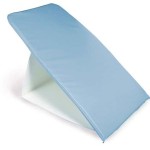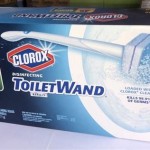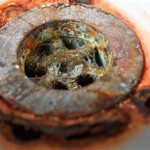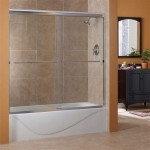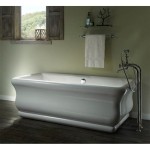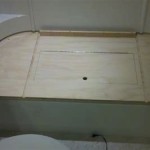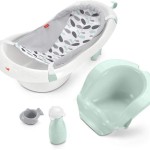How To Unclog a Bathtub Drain Full of Hair With Baking Soda
Clogged bathtub drains are a common household nuisance, often caused by a buildup of hair, soap scum, and other debris. While commercial drain cleaners can be effective, they often contain harsh chemicals that can damage pipes over time. Baking soda, a readily available pantry staple, offers a safer and more natural approach to tackling this common plumbing problem.
The effectiveness of baking soda in unclogging drains lies in its chemical properties. Baking soda, or sodium bicarbonate, is a mild alkali. When combined with an acid like vinegar, a chemical reaction occurs, producing carbon dioxide gas. This fizzing action helps to loosen and dislodge the clog, allowing it to be flushed away. Additionally, baking soda's slightly abrasive texture aids in scrubbing the inside of the pipe, further contributing to the cleaning process.
Before attempting to unclog a drain with baking soda, it's essential to remove any standing water. A cup or small container can be used to bail out the water, ensuring the baking soda mixture can reach the clog directly. This step also enhances the effectiveness of the chemical reaction with the vinegar.
Once the standing water is removed, one cup of baking soda should be poured down the drain. It's important to ensure the baking soda reaches as far down the drainpipe as possible. A funnel can be helpful for directing the baking soda into the drain opening and minimizing spillage.
Following the baking soda, one cup of distilled white vinegar should be poured down the drain. Distilled white vinegar is preferred as it does not contain added coloring or flavoring that could potentially stain the tub. The reaction between the baking soda and vinegar will create fizzing and bubbling. This is normal and indicates the cleaning process is working.
Allow the mixture to sit and work its magic for at least 30 minutes, and preferably an hour. This dwell time gives the chemical reaction ample opportunity to break down the clog and loosen the built-up hair and debris. Covering the drain opening with a stopper or cloth can help contain the reaction and prevent any splashes.
After the waiting period, the drain should be flushed with hot water. Hot water helps to melt any residual soap scum and flush away the loosened debris. Running the hot water for several minutes ensures a thorough rinse and helps clear the drain completely. If the drain is still slow to drain, the process can be repeated.
For more stubborn clogs, a combination of boiling water and baking soda can be used. After pouring the baking soda down the drain, slowly pour a pot of boiling water down the drain. The extreme heat of the boiling water can help to dissolve more resistant blockages, particularly those composed of grease or soap scum. However, exercise caution when using boiling water, as it can cause burns.
A plumbing snake can be used in conjunction with the baking soda method for particularly difficult clogs. A plumbing snake, also known as a drain auger, is a flexible tool that can be inserted into the drain to manually break up or retrieve the clog. After the baking soda and vinegar treatment, the plumbing snake can be used to further loosen and remove any remaining debris. This combination approach can be highly effective in clearing even the most stubborn blockages.
Prevention is key to maintaining clear drains and avoiding future clogs. Regularly removing hair from the drain strainer can significantly reduce the accumulation of hair in the drainpipe. Installing a hair catcher or drain screen can further prevent hair and other debris from entering the drain. These simple preventative measures can save considerable time and effort in the long run.
Periodic maintenance with baking soda can also help prevent clogs. Once a month, pouring a half cup of baking soda down the drain followed by hot water can help keep the pipes clear and prevent the buildup of soap scum and hair. This proactive approach can help ensure consistently free-flowing drains.
Understanding the materials of your pipes is essential when using any drain cleaning method. While baking soda is generally safe for most pipes, including PVC, metal pipes can corrode over time with repeated exposure to acidic substances. Consequently, it's important to use the baking soda and vinegar method sparingly on metal pipes and to thoroughly flush the drain with water afterward.
If the baking soda and vinegar method, even when combined with boiling water or a plumbing snake, fails to unclog the drain, it might be indicative of a more serious plumbing issue. In such cases, it is recommended to consult a professional plumber. A professional plumber has the expertise and tools to diagnose and address more complex plumbing problems, ensuring a proper and lasting solution.

How To Unclog A Bathtub Drain Bleach Baking Soda And Others

How To Remove Hair From Sink Bathtub Drain

How To Unclog Bathtub Drain Full Of Hair

Woman Shows How To Unclog Hair Filled Shower Drain In Minutes Using Baking Soda And Vinegar The Us Sun

Woman Shows How To Unclog Hair Filled Shower Drain In Minutes Using Baking Soda And Vinegar The Sun

Why You Should Never Use Baking Soda And Vinegar To Clean Clogged Drains Bren Did

How To Unclog A Bathtub Drain Bleach Baking Soda And Others

How To Unclog A Bathtub Drain 11 Diy Clog Busters

How To Unblock Drains Very Powerful Combination Clear In Minutes Express Co

How To Unclog A Bathtub Drain That S Full Of Hair Clover Contracting

